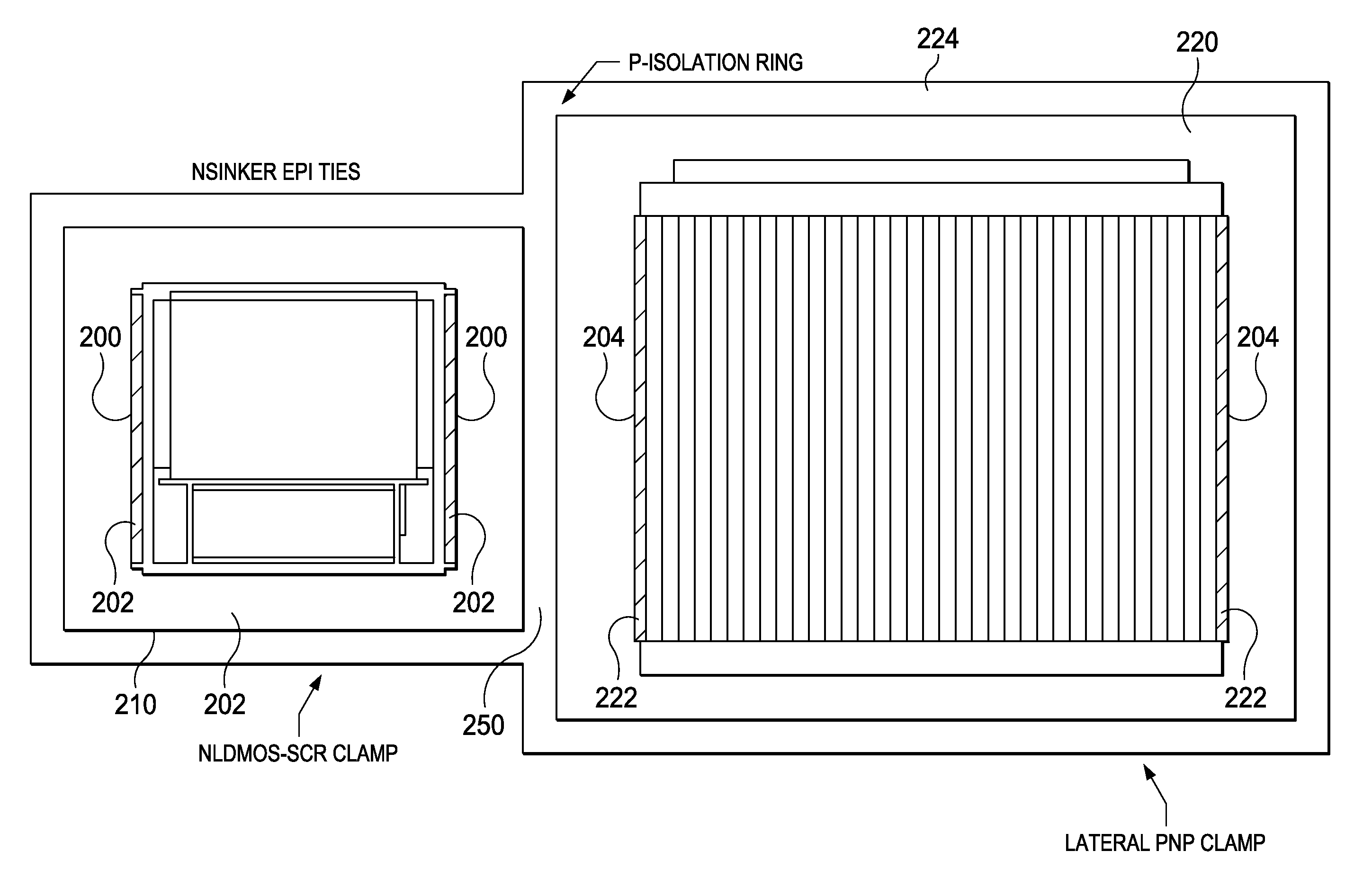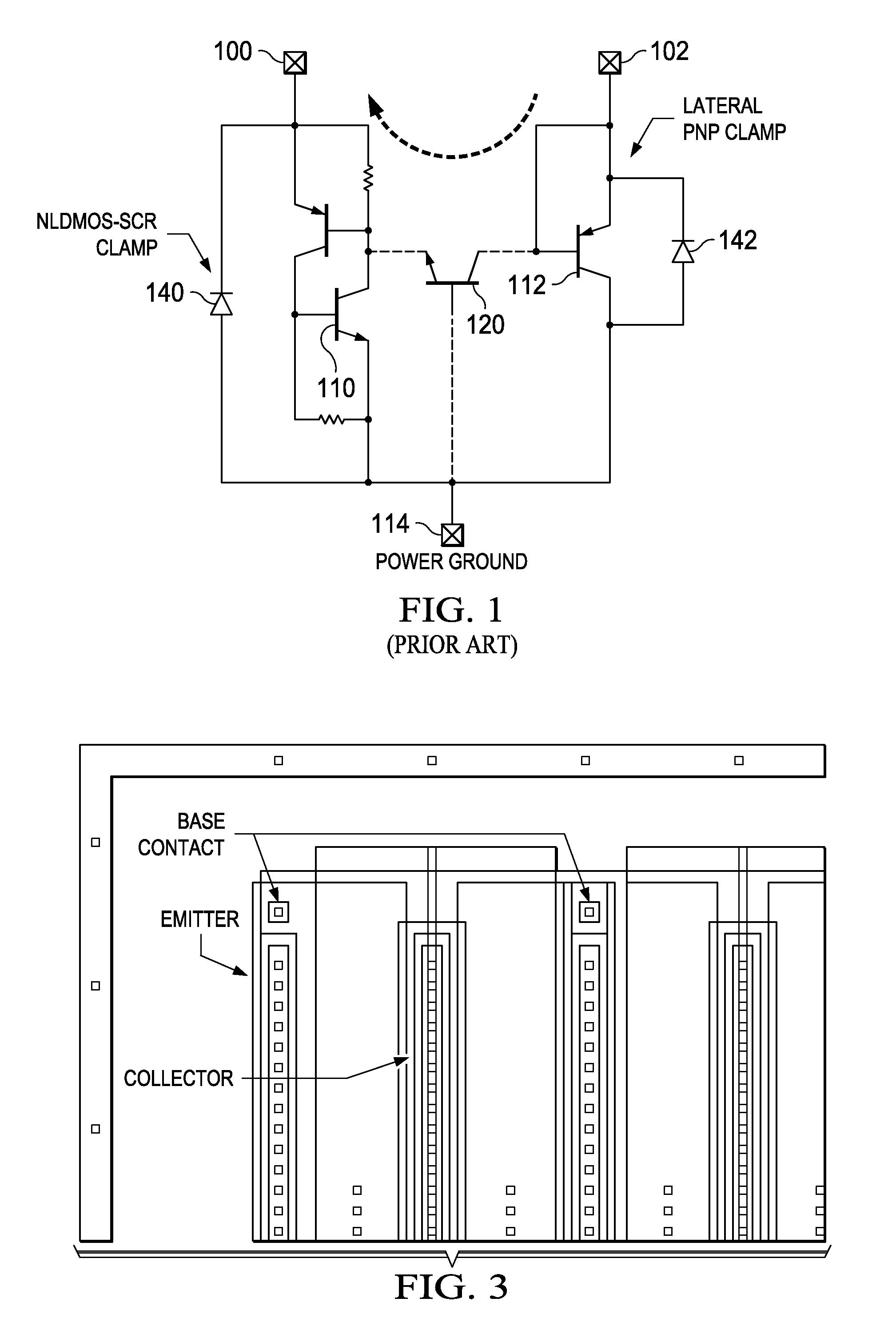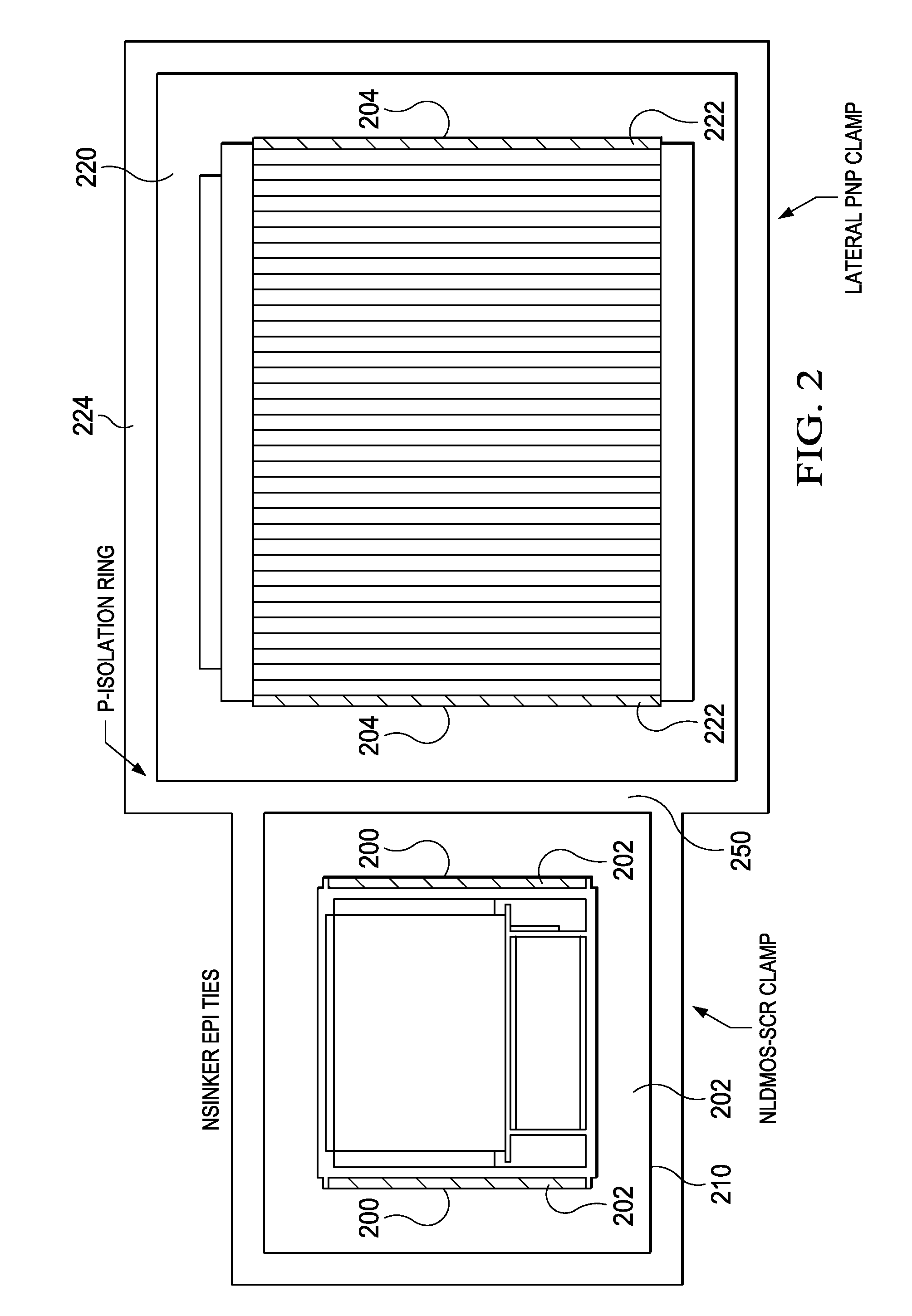High holding voltage BJT clamp with embedded reverse path protection in BCD process
a reverse path protection and high holding voltage technology, applied in the field of esd protection, can solve the problems of the total voltage between two high voltage pins exceeding the parasitic npn turn-on voltage, the risk of irreversible burnout of one or both esd devices, etc., to reduce the risk of irreversible burnout, increase the base contact area of the lateral bjt, and increase the efficiency of the reverse path body diode
- Summary
- Abstract
- Description
- Claims
- Application Information
AI Technical Summary
Benefits of technology
Problems solved by technology
Method used
Image
Examples
Embodiment Construction
[0018]As mentioned above, if two clamps are placed in close proximity to each other with minimum isolation rules, an alternative current path is produced through the parasitic NPN transistor between them. In the case of a high voltage pin-to-high voltage pin combination the total voltage may exceed the parasitic NPN turn on voltage especially in fast transient mode e.g., due to excessive reverse path diode voltage drop such as the voltage drop across diode 142 in FIG. 1.
[0019]In the case of a lateral BJT clamp such as lateral PNP or lateral NPN clamp implemented in a BCD process technology, or implemented in an extended voltage CMOS process, wherein the circuit defines a parasitic NPN the present invention increases the efficiency of the body diode in the lateral BJT by enlarging the base contact area, or by adding base contacts e.g. two or more base contacts, or by adding at least one sinker epi tie of same doping type as the base of the lateral BJT (n-sinker region that extends do...
PUM
 Login to View More
Login to View More Abstract
Description
Claims
Application Information
 Login to View More
Login to View More - R&D
- Intellectual Property
- Life Sciences
- Materials
- Tech Scout
- Unparalleled Data Quality
- Higher Quality Content
- 60% Fewer Hallucinations
Browse by: Latest US Patents, China's latest patents, Technical Efficacy Thesaurus, Application Domain, Technology Topic, Popular Technical Reports.
© 2025 PatSnap. All rights reserved.Legal|Privacy policy|Modern Slavery Act Transparency Statement|Sitemap|About US| Contact US: help@patsnap.com



